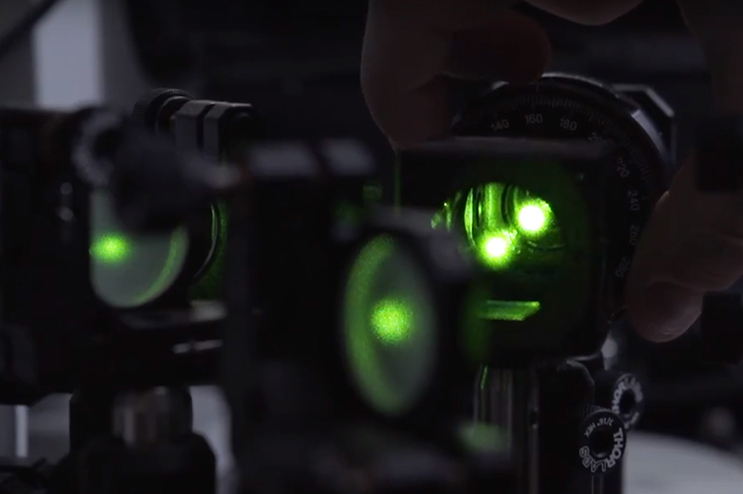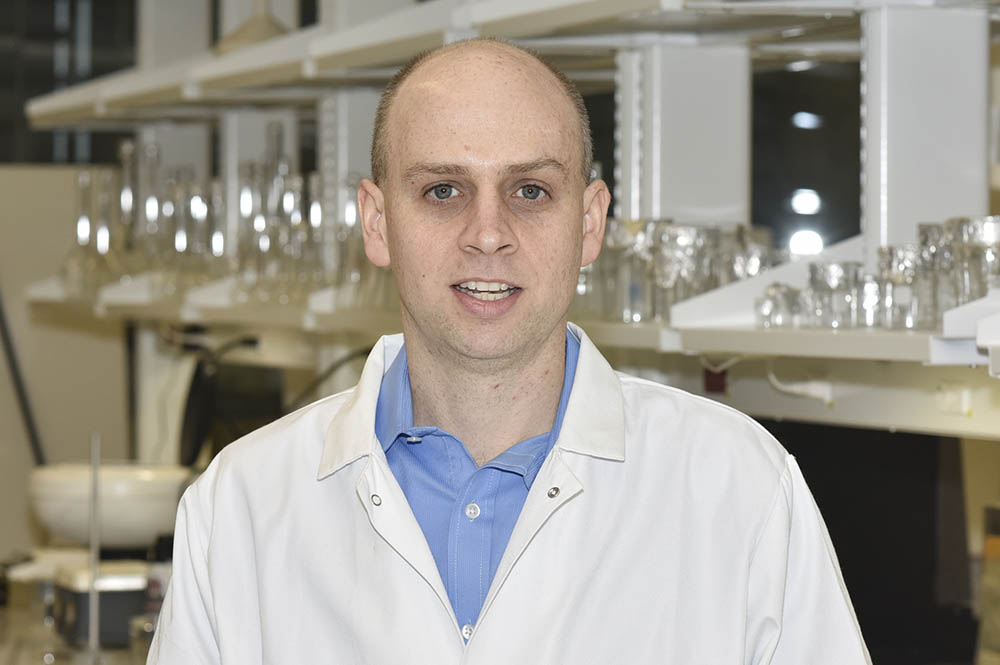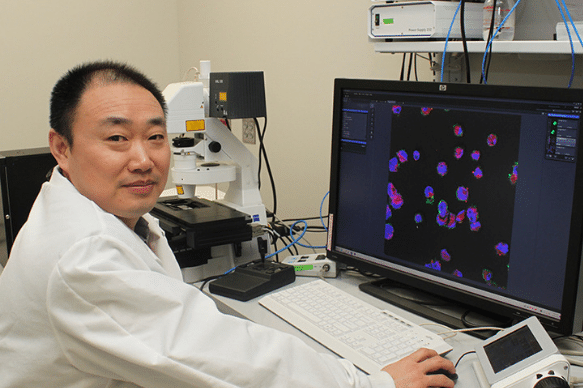News Story
Research Team Develops Breakthrough Technique to Combat Cancer Drug Resistance

Dr. Xiaoming "Shawn" He
The ability for cancers to develop resistance to chemotherapy drugs – known as multidrug resistance –remains a leading cause for tumor recurrence and cancer metastasis.
New findings put forth by University of Maryland Fischell Department of Bioengineering (BIOE) professor Xiaoming “Shawn” He and researchers from five other academic institutions point to a technique that uses specially designed nanoparticles and near infrared laser treatment to cause cancer cells to lose their multidrug resistance capabilities for days at a time. This creates a therapeutic window for chemotherapy to combat even the most drug-resistant cells left behind after surgery or earlier treatment. The group’s findings were published on Feb. 8 in Nature Communications.
"By administering chemotherapy within this ‘therapeutic window,’ oncologists could apply a lower dose of chemotherapy drugs to patients, with the potential for an improved treatment outcome – all while minimizing drug toxicity to healthy organs," He said.
One of the primary reasons cancer cells develop resistance is the overexpression of what are known as efflux pumps – proteins that protect a cell by pumping out unwanted toxic substances before they can reach their intended target. In the same way that efflux pumps work hard to protect against toxins, they also expel virtually all clinically relevant chemotherapy drugs.
Fortunately, efflux pumps require a source of chemical energy to perform their function. As such, by cutting off the energy supply to the efflux pumps, oncologists could lower – or even eliminate – a cell’s resistance to drugs, such as those administered for chemotherapy. Recognizing this, He and his research team developed a way to reduce the amount of chemical energy – adenosine triphosphate (ATP) – available to the efflux pumps in cancer cells.
The team – which also included researchers from The Ohio State University, University of Virginia, University of Missouri School of Medicine, Shanghai University of Traditional Chinese Medicine and Indiana University School of Medicine – targeted a specially designed nanoparticle to the mitochondrion, the cell's power generator wherein the cell converts oxygen and nutrients into ATP. Once the nanoparticles reach the cancer cells’ mitochondria, the researchers apply near infrared laser treatment to trigger a chemical reaction that reduces the amount of ATP available to the pumps and, thus, cuts off their power supply. Such treatment both reduces the expression of the efflux pumps and decreases their distribution on the cell plasma membrane.
He and his team assembled a unique lipid membrane-coated silica-carbon hybrid nanoparticle capable of targeting mitochondria through pyruvate, a chemical compound naturally used by cells to produce energy in the mitochondria. Using near infrared laser irradiation, He and his team were able to trigger the nanoparticle to produce reactive oxygen species that could oxidize NADH – an enzyme that is essential for cell metabolism in mitochondria to generate ATP – and thereby halt production of ATP and cut off the power supply to the cell’s efflux pumps. Furthermore, such treatment can reduce the expression of the efflux pups and decrease their distribution on the cell plasma membrane.
The research team’s findings demonstrate that the drug-laden nanoparticles – in combination with near infrared laser treatment – can effectively inhibit the growth of multidrug-resistant tumors with no evident systemic toxicity.
While researchers have long worked with nanoparticles for drug delivery, the findings put forth by He and his team represent a crucial breakthrough in addressing multidrug resistance in cancer cells.
"For years, researchers have focused on delivering more chemotherapy drugs into cancer cells using nanoparticles, without targeting the root of drug resistance," He said. "This meant that the cancer cells maintained their ability to expel the chemotherapy drugs, which limited any enhancement of the cancer therapy. To address this challenge, our research group is using nanoparticles not only to deliver more chemotherapy drugs to the target site within cancer cells, but also to compromise the function of the efflux pumps and thereby significantly improve safety and efficacy of cancer therapy."
In addition to He, researchers from The Ohio State University (OSU), University of Virginia (UVA), University of Missouri School of Medicine (MU), Shanghai University of Traditional Chinese Medicine (SHUTCM), and Indiana University School of Medicine (IU) contributed to the paper. The full list of authors is as follows: Xiaoming “Shawn” He (UMD, OSU), Hai Wang (OSU), Zan Gao (UVA), Xuanyou Liu (MU), Pranay Agarwal (OSU), Shuting Zhao (OSU), Daniel W. Conroy (OSU), Guang Ji (SHUTCM), Jianhua Yu (OSU), Christopher P. Jaroniec (SHUTCM), Zhenguo Liu (MU), Xiongbin Lu (IU), and Xiaodong Li (UVA).
This work was partially supported by grants from American Cancer Society, the National Institutes of Health, the National Science Foundation the National Natural Science Foundation of China.
Published February 8, 2018









